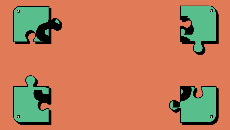Save 50% on a 3-month Digiday+ membership. Ends Dec 12.
Outbrain co-CEO David Kostman: ‘Advertisers are looking to consolidate spend with fewer partners’

Outbrain has announced the debut of Onyx, a new platform launched in partnership with Adelaide to further its credentials as a premium advertising offering.
Onyx is essentially a sub-brand for the company — one of the stalwarts of the content recommendation space — and uses a mixture of contextual signals and first-party data to place its advertisers in front of relevant audiences on premium inventory, according to Outbrain.
Speaking with Digiday, David Kostman, Outbrain’s co-CEO, characterized the launch of Onyx as a move that helps the company enhance its offering from one that’s known primarily for performance ads in native environments to a more premium “full-funnel” service.
The below conversation has been edited for clarity.
Why launch the Onyx service/sub-brand now?
It’s about us going from primarily about performance and driving conversions to consideration and awareness budgets that drive attention, and for us, it’s a natural extension.
It significantly increases our addressable market, serving budgets that are three to five times the budgets we are currently targeting from advertisers. We feel the timing is right because marketers are looking for more accountability and delivering measurability along with brand awareness.
The timing is also right because driving attention and real value through awareness budgets are increasingly important for advertisers.
How does it work?
Onyx by Outbrain is a different platform and [ad inventory] will be accessible programmatically and bought on a CPM basis. This is targeted at enterprise brands, and meets their criteria around brand safety and adjacency.
It leverages our prediction technologies — AI and machine learning — of course! But jokes aside, it marries what we’re really strong at which is predicting engagement and generating attention. We leverage many contextual signals such as what [content] is on the page using NLP [natural language processing], and we have first-party data because we have code on the publishers’ page, so that helps build our interest graph.
We can see much more than just the impression of an ad, we can see the reading behavior of the device and create much better targeting capabilities.
The announcement makes much of attention-based offerings. Do you expect this to be used as a currency for media trading in future?
An increasing percentage of advertisers are are considering attention as a key metric for their campaign, as they want to measure and link it to incremental outcomes.
So, I think that eventually, the world will trade based on achieving attention metrics, some of them are doing it already. We are planning to have deals that are attention-based, such as maximum conversion-based deals, and deals that are driving certain attention-based metrics.
There seems to be a concerted effort among advertisers to de-monetize ‘made-for-advertising,’ or MFA, content. What efforts has Outbrain made to accommodate that?
I think advertisers are not just about driving quality [ad placements], it’s about increasing what they can achieve. They are looking to consolidate spend with fewer partners, we believe that bringing both the ability to bring both performance and awareness is pretty unique.
More in Media Buying

In Graphic Detail: What to expect in media in 2026
Programmatic mix will broaden, while AI investment will both drive ad investment and steal focus from other marketing priorities.

As industry anticipates AI search ads, buyers scrutinize Google’s AI Max
Media buyers report mixed results with the AI-powered search ads toolset.

AdsCopilot offers agencies an AI overlay at no cost
It functions as a real-time, AI-powered assistant directly within the user’s web browser, overlaying and interacting with existing ad platforms that media agencies use.









